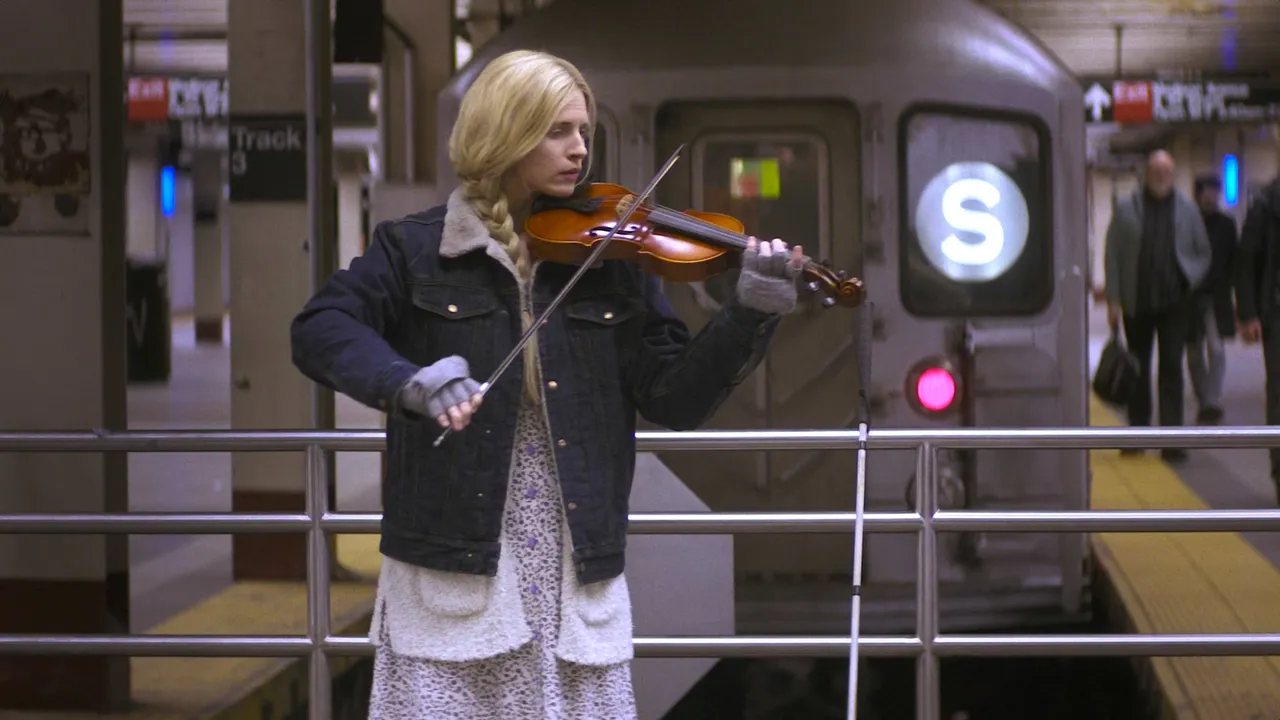
The speed and brutality with which Netflix, following the fallout of the Spacey scandal, decided to cancel House of Cards, its once most popular TV series, can be seen as a reflection of what this global streaming service represented at the time: the strongest television studio in the world. Unlike HBO, which built its status on a handful of expensive, elaborate, and prestigious projects, Netflix opted for quantity, flooding its audience with a multitude of series that differed in style, genre, and the ambitions of their creators—effortlessly filling the abrupt voids in its programming. Netflix users truly had a wealth of choice among its shows, and the platform’s series comically vie for various “best” titles, such as “best,” “most controversial,” “most talked-about,” and “most popular.” For The OA, which premiered last year, it might be said that it was created in an attempt to become “the most out there.”
The series stands out in today’s television landscape with the rare fact that its lead actress is also one of its creators. Brit Marling, who sacrificed a Goldman Sachs clerk role and a potentially brilliant career as a “Master of the Universe” to pursue art, enjoys considerable acclaim in the American independent scene not only as an actress but also as a screenwriter. Her most notable achievement is Another Earth (2011), which blended sci-fi with intimate drama. The OA was created by Marling alongside her longtime collaborator Zal Batmanglij, who also directed it, with Brad Pitt serving as producer behind the camera.
Marling portrays Prairie Johnson, a blind woman who returns to her hometown after seven years of mysterious disappearance. Her return is a source of mystery—not just because she stubbornly refuses to explain where she was during those seven years, but also because she insists on being called “The OA.” The most bizarre detail? She has regained her sight. Her refusal to account for her disappearance frustrates her parents—Nancy (Alice Krige) and Abel Johnson (Scott Wilson)—who grow increasingly concerned about her mental health. However, Prairie/The OA is eager to recount her story to a group of five curious souls: four local high school students and one of their teachers. Gathering them into an unusual social circle, she begins narrating a bizarre tale of her origins, a quest for her true parents that led her to run away from home and end up imprisoned by Dr. Hunter Aloysius Percy (Jason Isaacs), whose motivations for this act are the most surreal part of the story. Her audience—tormented by mundane everyday problems involving family life, finances, and a lack of perspective in a small town—is understandably fascinated by a story entwined with decades-old political intrigues, the afterlife, and parallel universes. Yet they grow concerned when OA asks them to help with an unusual, potentially dangerous, and perhaps entirely nonsensical venture.
The first season, in line with the norms of the Golden Age of Television, is restricted to eight episodes. It initially resembles a low-budget independent “art” film. With cinematography by Lola Howard, cool and grey tones dominate, while the melancholic music by Rostam Batmanglij (Zal’s brother) lends it a strong dose of realism. Though The OA is an unusual series, its true distinctiveness emerges early: what begins as a banal story of a long-lost girl returning home suddenly transforms into a tale spanning multiple dimensions. Marling and her partner execute this transition skillfully, and the series effortlessly shifts between the protagonist’s present and past. The most important task—making the protagonist’s bizarre story believable—is also successfully achieved. The audience will have no trouble accepting it, just as the characters who would otherwise deem OA a candidate for a psychiatric clinic do. The script and direction strike a balance between the protagonist and other characters, some of whom offer intriguing subversions or outright rejection of clichés. One example is Steve Winchell, a bullying school jock played by Irish actor Patrick Gibson, who evolves into something akin to a redemptive figure.
Marling’s efforts as both screenwriter and actress are exceptional: she convincingly portrays Prairie Johnson as both a teenager and an older woman. A diverse ensemble cast supports this, including young Emory Cohen and Jason Isaacs, who shines as a demonic antagonist with seemingly rational motives for his actions. Choreographer Ryan Heffington also deserves credit for making The OA one of the rare TV series where dance plays a significant role.
All this, however, cannot compensate for the disappointing finale, which feels incomplete and uncertain about whether The OA aims to be a “normal” series unraveling its plot over several seasons or attempting to conclude everything in eight episodes. This leaves the audience exposed to predictable twists that cast doubt on everything seen before, while simultaneously giving the series a conventional resolution. This includes a grotesque ending that leaves many questions unanswered, gently suggesting a second season might tie things up. Though The OA concludes its first season as just another conventional series rather than the “wildest” Twin Peaks reimagining, the overall impression is still positive. Future seasons, if handled well, could certainly fill the void left by House of Cards’ downfall.
RATING: 6/10 (++)
(Note: The text in the original Croatian version is available here.)
Blog in Croatian https://draxblog.com
Blog in English https://draxreview.wordpress.com/
InLeo blog @drax.leo
LeoDex: https://leodex.io/?ref=drax
Hiveonboard: https://hiveonboard.com?ref=drax
InLeo: https://inleo.io/signup?referral=drax.leo
Rising Star game: https://www.risingstargame.com?referrer=drax
1Inch: https://1inch.exchange/#/r/0x83823d8CCB74F828148258BB4457642124b1328e
BTC donations: 1EWxiMiP6iiG9rger3NuUSd6HByaxQWafG
ETH donations: 0xB305F144323b99e6f8b1d66f5D7DE78B498C32A7
BCH donations: qpvxw0jax79lhmvlgcldkzpqanf03r9cjv8y6gtmk9